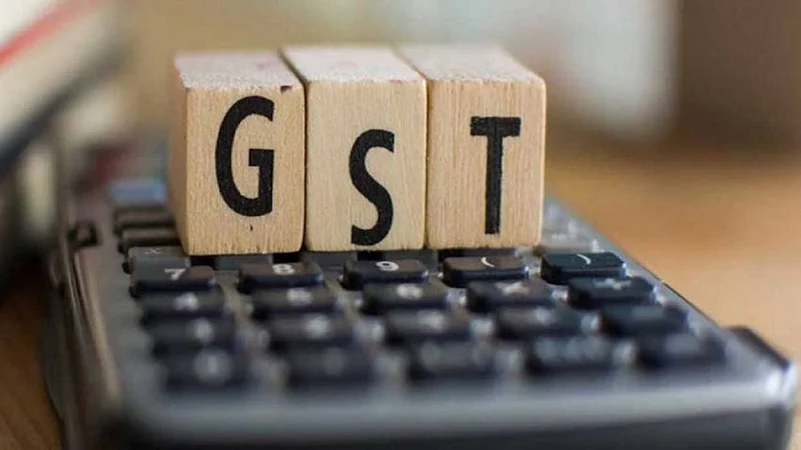Chapter X of the GST Act(s) and Rule(s) - Bare Law explains how one pays tax, interest, penalty, and any other amount in relation to the Goods and Services Tax (GST).
As a wing under the Institute of Chartered Accountants of India (ICAI), published by the GST & Indirect Taxes Committee, it offers taxpayers an organised manner for the smooth performance of obligations. The intention is to explain some key provisions of law so as not to default or contravene the laws in respect of tax.
Modes Of GST Payments And Electronic Ledger
GST can be paid online through Internet banking, debit/credit cards, National Electronic Fund Transfer (NEFT), and Real-Time Gross Settlement (RTGS). All these get credited to the taxpayer’s electronic cash ledger. The date for payment is on the date that the amount is credited to the government’s account. This results in immediate updating of the same in the books of the taxpayer.
There are three main electronic ledgers in GST. These include the electronic cash ledger, which accumulates funds to be used for paying tax or any penalty and interest and other charges. Another is the electronic credit ledger, which documents input tax credits (ITC) that can be credited against GST liabilities. Lastly, there is the electronic liability register that mentions all the amounts payable, such as tax, interest, and penalties.
These ledgers help in organising and tracking the obligations pertaining to GST.
Application Of Electronic Ledgers And Payment Order
The electronic cash ledger can be used for paying any GST-related liabilities, whether taxes or penalties.
However, the electronic credit ledger is strictly for recording ITC, and this can only be used to pay output tax—the taxes owed on sales or services. ITC cannot be used for penalties or interest, and the government outlines how it is to be utilised. For instance, IGST credit should be exhausted first for payment of IGST, and whatever balance is available, it would be credited first to CGST and then to SGST.
The GST law has outlined the steps for liability clearing. Self-assessed taxes and dues from earlier tax periods need to be settled first. Next, the amount of taxes from the current period needs to be cleared. Thereafter, all other amounts payable, including any penalties or demands raised during the assessment, should be cleared. This ensures that all pending liabilities are cleared before new ones accrue.
In case of delay of GST payments, interest is levied at a normal rate of 18 per cent per annum. In cases wherein ITC has been wrongly availed of or utilised, the rate of interest is aggravated to 24 per cent per annum. Interest is payable from the due date up to the payment date, making timely compliance crucial.
Penalty is also administered for other compliance-related issues, such as delayed returns and incorrect claims of ITC. For the normal return, Rs 50 per day is charged, comprising Rs 25 of CGST and Rs 25 of SGST, and an additional Rs 20 per day for nil returns. For tax default, the penalty is 10 per cent of the amount of tax or Rs 10,000, whichever is higher in case of mistakes. However, in case of deliberate evasion of tax, a penalty equal to 100 per cent of the tax can be imposed.
Refund And TDS/TCS
Overpayments in the electronic cash or credit ledger can be refunded after all the liabilities are paid. Refund under the GST Act is provided under Section 54 of the Act that prescribes rules for making of a refund claim.
Additionally, some government agencies have to deduct tax at source (TDS) when paying suppliers. The TDS rate is 1 per cent of the payment value less GST. The amount deducted is credited to the cash ledger of the supplier, who can use this amount to settle his tax liability. Likewise, the e-commerce operators are liable to collect tax at source (TCS) from the suppliers using their platforms. TCS amount, up to 1 per cent, is credited to the cash ledger of the supplier to offset his tax liability.
Transfers Between Ledgers And Government-Imposed Restrictions
Transfers between the electronic ledgers of taxpayers are possible, such as transferring excess cash in the cash ledger to the IGST or CGST ledger. However, there are specific rules and restrictions on transfers, including that liabilities must be cleared before the funds can be transferred.
It can also put limits on how much of the taxpayer’s output tax liability should be allowed to be paid with ITC. These are put in place so that the cash share paid by businesses is reasonable and that businesses do not lean too much towards credit adjustments.
Easy Compliance With Technology
All these processes are centralised through the GST portal, making it easy for taxpayers to manage their ledgers, track liabilities, file returns, and claim refunds. The digital infrastructure is helpful in making GST compliance simple and in assisting businesses in staying on top of their tax obligations.
Understanding GST payment rules is vital for keeping track of compliance in order to avoid penalties or interest. This can be made possible through the use of electronic tools and following updates to ensure smooth tax management.











